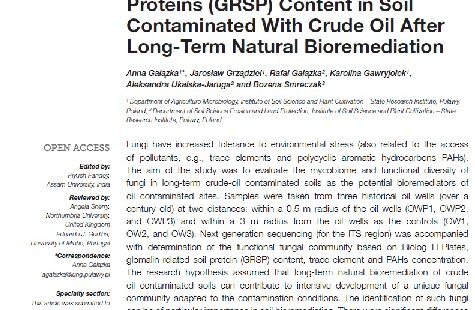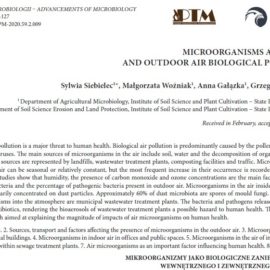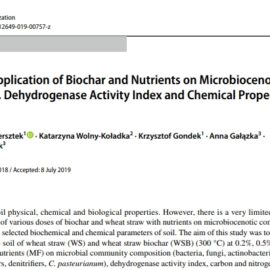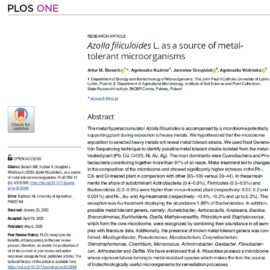Gałązka A., Grządziel J., Gałązka R., Gawryjołek K., Ukalska-Jaruga A., Smreczak B. (2020): Fungal Community, Metabolic Diversity, and Glomalin-Related Soil Proteins (GRSP) Content in Soil Contaminated With Crude Oil After Long-Term Natural Bioremediation. Frontiers in Microbiology, 11:572314, (100 pkt. MNiSW, IF = 4.235)
DOI: https://doi.org/10.3389/fmicb.2020.572314
Abstract
Fungi have increased tolerance to environmental stress (also related to the access of pollutants, e.g., trace elements and polycyclic aromatic hydrocarbons PAHs). The aim of the study was to evaluate the mycobiome and functional diversity of fungi in long-term crude-oil contaminated soils as the potential bioremediators of oil contaminated sites. Samples were taken from three historical oil wells (over a century old) at two distances: within a 0.5 m radius of the oil wells (OWP1, OWP2, and OWP3) and within a 3 m radius from the oil wells as the controls (OW1, OW2, and OW3). Next generation sequencing (for the ITS region) was accompanied with determination of the functional fungal community based on Biolog FFPlates, glomalin related soil protein (GRSP) content, trace element and PAHs concentration. The research hypothesis assumed that long-term natural bioremediation of crude oil contaminated soils can contribute to intensive development of a unique fungal community adapted to the contamination conditions. The identification of such fungi can be of particular importance in soil bioremediation. There were significant differences in the fungal community and functional diversity between the soil samples. The soils collected directly from the oil wells were characterized by higher biological activity and higher diversity of PAH-degrading fungal candidates compared to the soils collected within 3 m of the oil wells. The total glomalin-related soil proteins (T-GRSP) and easily-extractable glomalin-related soil proteins (EE-GRSP) contents were lower in soil samples taken directly from the crude oil well. The control soil (OW) subjected to a long-term natural remediation may already have sufficient conditions for the growth and development of mycorrhizal fungi. The mycobiome of the soils collected directly from the oil wells (OWP1, OWP2, and OWP3) was characterized by a 35% share of PAH-degrading candidates, compared to the soil collected at the 3 m distance from the oil wells (OW1, OW2, and OW3) at < 5%. The main PAH-degrading fungal candidates belong to genera Ilyonectria, Chaetomium, Gibberella, Paraphoma, Schizothecium, Pseudorobillarda, Tetracladium, Ganoderma, Cadophora, Exophiala, Knufia, Mycoleptodiscus, Cyphellophora, Fusicolla, Devriesia, Didymella, Plenodomus, Pyrenochaetopsis, Symbiotaphrina, Phallus, Coprinellus, Plectosphaerella, Septoriella, and Hypholoma. The share of three- and four-ringed PAHs in soil was higher as the distance from the oil well increased. These results may indicate that more effective degradation processes occur closer to the oil wells.



